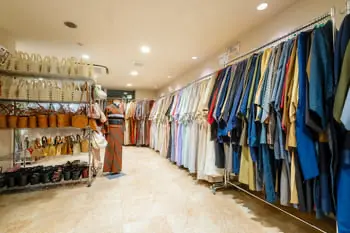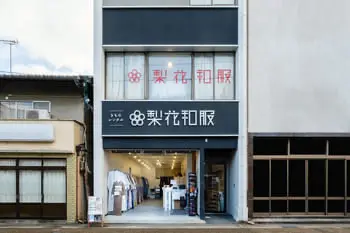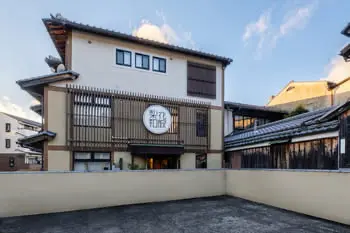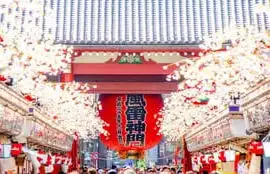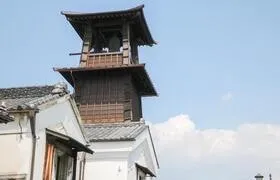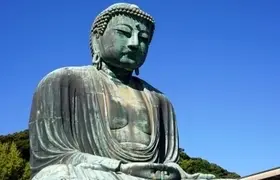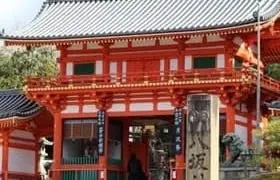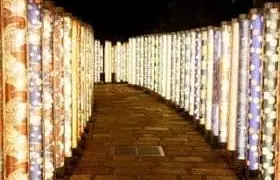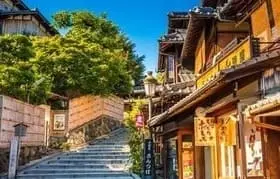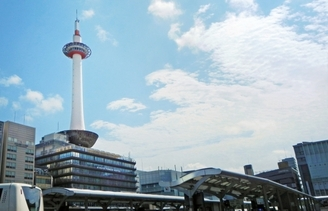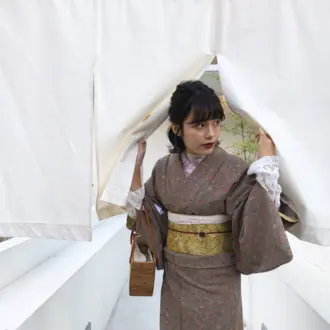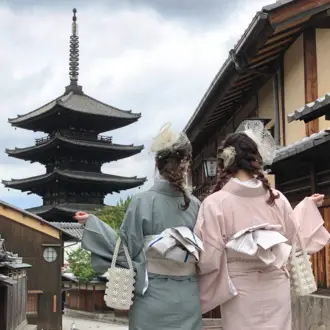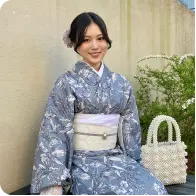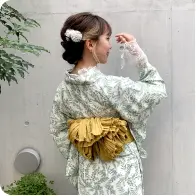Types of Kimonos and Knowledge You Should Know for Renting Kimonos with Your Child in Kyoto

Recently, more and more families are enjoying kimono rentals in Kyoto, with parents and children dressing up together to explore the city. While strolling around in regular clothes is of course fun, why not try something special and dress up in a kimono for the day? Walking through the traditional streets of Kyoto in beautiful kimono can make you feel like a princess.
The harmony between the scenic views and traditional attire will inspire you to take more photos than usual, spark meaningful conversations, and create unforgettable memories as a family.
In this article, we’ve put together useful kimono knowledge to know before renting kimono as a parent-child pair in Kyoto!
Click here for the Chinese version of the RIKAWAFUKU Kyoto Station Front Store page (梨花和服 京都站前店中文版).
Types of Rental Kimonos
Kimonos are categorized by their fabric, design, and formality level. Depending on the occasion and the setting, it’s important to choose the appropriate kimono style—either formal or casual—along with a matching obi (kimono sash) and the proper way to tie it.
Formal (Ceremonial Wear)
These are worn for special, celebratory occasions. In the Edo period, it was believed that unmarried women would express romantic interest by waving the long sleeves of their furisode. Once married, women would cut and sew the sleeves short, leading to the tradition of the tomesode. Today, these are typically worn by hosts or close family members at weddings and formal events.
-
Kurotomesode (Black Tomesode)
The most formal kimono for married women. Features five family crests and is usually worn by the mothers and married female relatives of the bride and groom at weddings. -
Irotomesode (Colored Tomesode)
A formal kimono that can be worn by both married and unmarried women. With five crests, it is formal wear; with three or fewer crests, it becomes semi-formal. Suitable for a wide range of formal events and parties. -
Furisode
The most formal kimono for unmarried women. Characterized by vibrant patterns that extend seamlessly across the fabric and long flowing sleeves. Worn at coming-of-age ceremonies and weddings.
Other formal wear includes uchikake (elaborate bridal kimono) and plain black montsuki (kimono with crests), typically used for funerals.
Obi & Tying Styles
Double-layered taiko musubi knots with maru-obi or fukuro-obi are standard, symbolizing layers of happiness.
Semi-Formal (Quasi-Ceremonial Wear)
These are worn as guests at weddings or parties and can also be dressed down with a different obi for casual settings.
-
Houmongi (Visiting Wear)
Features elegant, continuous patterns that form a complete picture across the kimono. With a single family crest, it can be worn as formal attire for weddings or other celebrations. -
Tsukesage
Simpler than houmongi, with patterns that don’t cross the seams and point upward when worn. Originally a substitute for houmongi, but now luxurious designs are often treated as equivalent in formality. -
Iromuji (Plain-Colored Kimono)
A solid-colored kimono with no patterns. With one dyed crest, it’s formal; with stitched crests, it’s semi-formal; and with no crest, it’s casual. It’s extremely versatile and can be styled accordingly.
Obi & Tying Styles for Semi-Formal Wear
Houmongi and tsukesage are usually paired with a fukuro-obi and a double-layered taiko knot for a formal look.
Iromuji can be styled more casually with a nagoya-obi and a single-layered taiko knot. Variations like ribbon taiko or Ginza musubi can add a cute or chic touch.
Casual (Everyday Kimono)
These are for daily outings, strolls around town, or casual events with friends.
-
Komon
A kimono with repeated patterns across the entire fabric. Widely worn as casual wear. More elegant patterns or high-grade Edo komon can be worn as semi-formal attire. -
Tsumugi
Casual kimono made of roughly textured silk. The yarn is dyed before weaving, resulting in distinctive patterns like stripes or ikat. Solid-colored tsumugi can be slightly more formal than patterned ones. -
Yukata
The quintessential summer kimono made of dyed cotton. Originally used after bathing, now commonly worn to summer festivals and fireworks displays as casual wear.
Recently, cotton and wool kimono have also become popular choices for casual wear.
Obi & Tying Styles for Casual Kimono
Primarily paired with hanhaba-obi (half-width obi). You can enjoy a variety of fun and stylish tying options from simple bunko musubi to decorative flower or ribbon knots.
About Kimono Materials for Rental
Depending on the season, different types of kimono are worn:
Awase (Lined Kimono) | October to May
These are double-layered kimono, with both an outer and inner lining, making them the most versatile and commonly worn type throughout the year.
Hitoe (Unlined Kimono) | June & September
Made without a lining, these are single-layered kimono with opaque fabric suitable for early summer and early fall.
Usumono (Lightweight Sheer Kimono) | July & August
These include sheer silk fabrics like sha and ro, as well as linen joufu. They are specially made for the hot summer months.
Types of Kimono Fabrics
Usumono (Lightweight Sheer Kimono) | July & August
These include sheer silk fabrics like sha and ro, as well as linen joufu. They are specially made for the hot summer months.
Silk (Shōken)
The highest-grade silk used in formal kimono.
Known for its beautiful luster, smooth texture, moisture-wicking, and heat-retaining properties.
However, it is delicate—prone to shrinking in water and friction damage, so careful handling is required.
Linen (Asa)
Very breathable and quick-drying, linen is lightweight and perfect for summer kimono.
However, due to its crisp texture, it wrinkles easily.
Cotton (Momen)
A soft and breathable fabric made from cotton fibers, commonly used in casual kimono and summer yukata.
Highly absorbent, comfortable, and great for everyday wear.
Wool
A thick woven fabric made from wool.
Durable, resistant to wrinkles, and warm, making it ideal for cooler seasons.
Lighter versions, known as summer wool, are also used in warmer months.
Polyester
A synthetic fiber often used for casual kimono and yukata.
It is durable, water-resistant, and stain-resistant, making it easy to care for and ideal for beginners.
Features of Kimono Used in Rental Services
In kimono rental services, polyester kimono are commonly used, as they are easy to wear even for people who are not used to wearing kimono in their daily lives.
Many rental shops offer modern-style kimono with bold and contemporary patterns, which are very popular among tourists and younger generations.
Some rental stores specialize in antique kimono, so it’s a good idea to choose a shop based on your personal style and preferences.
Most rental kimono are paired with hanhaba obi (half-width belts), although some shops also offer kimono rentals with Nagoya obi for a more traditional look.
Characteristics of Polyester Kimono:
- Lightweight and easy to handle
- Resistant to stains
- Water-resistant
- Available in a wide variety of modern designs
However, polyester lacks breathability and moisture absorption, and has low heat retention, so it’s important to adjust with appropriate undergarments depending on the weather.
Tips for wearing kimono stylishly: [Kyoto] Yes, even with rental kimono! Tips for wearing kimono well
Can Babies Rent Kimono in Kyoto?
Is it possible to rent kimono for babies in Kyoto?
One of the most well-known occasions for babies to wear kimono is for a Miyamairi (a traditional shrine visit for newborns in Japan).
Many kimono rental shops in Kyoto offer baby kimono specifically for Miyamairi ceremonies.
However, some shops may not provide this service, so it’s recommended to inquire in advance to confirm availability.
Tips for Dressing Children in Kimono
When renting kimono as a parent and child, special attention should be paid to dressing young children under the age of 10!
For small children (around age 7 or younger), dressing in kimono can take about 20 minutes.
Although they may be curious and excited at first, many children quickly become restless or uncomfortable in unfamiliar kimono and traditional sandals (zōri), and some may even start to cry. To help make the experience more comfortable for your child, keep these tips in mind:
- Wrap a towel around the child’s torso during dressing to soften the pressure from the cords and obi (sash).
- Keep the hem slightly shorter to prevent tripping over the kimono.
- Kyoto has hot summers and cold winters, with temperature differences of over 15°C (59°F) between day and night. In cooler seasons, be sure your child is wearing warm inner layers.
- Since wearing kimono is unfamiliar, ask the dresser for tips, such as how to help your child use the restroom while wearing kimono.
Keeping these points in mind will help ensure your child is comfortable and happy throughout your kimono experience!
Things to Keep in Mind When Exploring Kyoto in Kimono with Your Child
Wearing kimono as a parent and child while sightseeing in Kyoto creates a truly charming and memorable experience!
However, since sightseeing in kimono is different from your everyday attire, here are a few important things to keep in mind:
-
Bring an extra pair of shoes for your child. Many children are not used to zōri (traditional sandals) and may experience foot pain, so it’s a good idea to carry comfortable shoes as a backup.
-
Kyoto’s sightseeing areas often include slopes and stairs, which can increase physical exertion and make you feel hot. In such cases, cooling the neck or underarms can help lower body temperature effectively.
-
While rental kimono are usually resistant to stains and water, it’s smart to bring a small towel, handkerchief, or tissues to quickly clean any spills, especially during meals.
-
Traveling with children while wearing unfamiliar kimono can take more time than expected. Be sure to plan your schedule with plenty of extra time. For longer distances, it’s recommended to use public transport like trains, buses, or taxis to reduce walking and fatigue.
★Helpful tips and guides for your kimono rental experience
Kimono Rental in Kyoto & Asakusa: 5 Common Mistakes to Avoid on the Same Day
How to walk without ruining your kimono when renting it in Kyoto
★Discover more helpful articles for your Kyoto trip.
Kyoto Kimono Rental for Couples – Explore the City in Traditional Style!
We recommend renting a kimono in Kyoto and traveling alone! Make wonderful memories!
10 sightseeing spots where you should rent a kimono during New Year’s in Kyoto
Where is the best reservation area for kimono rental in Kyoto?
About the Author
Rika Wafuku operates four kimono rental stores in Kyoto, located near popular tourist spots like Arashiyama, Gion, Kiyomizu-dera, and Kyoto Station. In 2021, the store served over 87,000 customers in the Kyoto area!
Rental plans start from 4,000 yen, with hair styling plans available from 5,000 yen, offering great value.
Close to famous sightseeing locations like Togetsukyo Bridge, Kiyomizu-dera, Yasaka Koshindo, and Yasaka Shrine!
Kimono Rental Rika Wafuku
Kimono Rental Rika Wafuku Gion Store
Kimono Rental Rika Wafuku Arashiyama Store
Kimono Rental Rika Wafuku Kiyomizu-dera Store
Kimono Rental Rika Wafuku Kyoto Station Store

